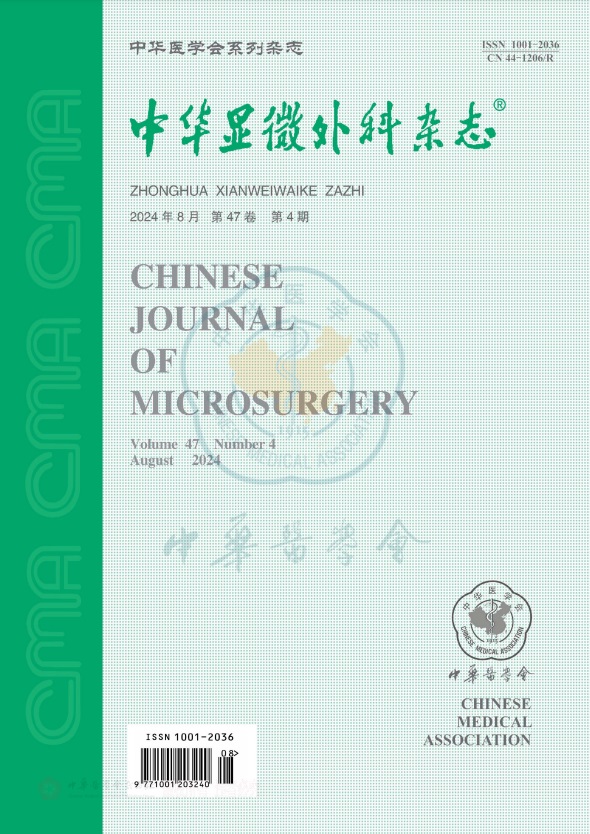Application of enhanced recovery after surgery principles in treating long bone defect with free fibula graft
引用次数: 0
Abstract
Objective To summarize the application of enhanced recovery after surgery (ERAS) principles in treating long bone defect with free fibula graft (FVFG) . Methods From January, 2012 to January, 2017, ERAS principles were applied in 26 cases of long bone defect treating with vascularized fibula flap graft, via a series of comprehensive measures, including strengthening psychological nursing, nutrition support and pain management, optimizing operation plan, and early scientific functional exercise. Surgical duration, hospital stay time, satisfaction of patients, postoperative visual analogue scale (VAS) score, bone defect healing time, and Enneking score were recorded through regular outpatient follow-up after discharge. Results The average length of surgical duration and hospital stay time was (3.2±0.5) h and (10.2±1.2) d, respectively. Discharged satisfaction was greater than 95%. Postoperative VAS score was less than 3. During the follow-up period of 1.6-6.0 years, 26 fibular flap survived, and all the bone defect were healed, with an average healing time of (5.5±0.6) months. Followed-up at 1.5 years after the operation, the upper limb function of 7 patients increased by 80.1%, and the lower limb function of 19 patients increased by 82.5%. Conclusion The application of ERAS in treating long bone defect with FVFG can obtain satisfactory limb function, alleviate patients’ pain, shorten the duration of hospitalization, promote the rehabilitation and satisfaction of patients. Key words: Enhanced recovery after surgery; Fibula flap; Graft; Bone defect, long术后增强恢复原则在游离腓骨移植治疗长骨缺损中的应用
目的总结增强术后恢复(ERAS)原则在腓骨游离移植治疗长骨缺损中的应用。方法自2012年1月至2017年1月,应用ERAS原理,采用血管化腓骨瓣移植治疗长骨缺损26例,采取强化心理护理、营养支持和疼痛管理、优化手术方案、早期科学功能锻炼等一系列综合措施。出院后通过定期门诊随访记录手术时间、住院时间、患者满意度、术后视觉模拟评分(VAS)、骨缺损愈合时间和Enneking评分。结果平均手术时间和住院时间分别为(3.2±0.5)h和(10.2±1.2)d。出院满意度大于95%。术后VAS评分小于3。随访1.6-6.0年,26个腓骨瓣成活,骨缺损全部愈合,平均愈合时间(5.5±0.6)个月。术后随访1.5年,7例患者上肢功能提高80.1%,19例患者下肢功能提高82.5%,促进患者的康复和满意度。关键词:术后恢复增强;腓骨皮瓣;嫁接;骨缺损,长
本文章由计算机程序翻译,如有差异,请以英文原文为准。
求助全文
约1分钟内获得全文
求助全文
来源期刊
CiteScore
0.50
自引率
0.00%
发文量
6448
期刊介绍:
Chinese Journal of Microsurgery was established in 1978, the predecessor of which is Microsurgery. Chinese Journal of Microsurgery is now indexed by WPRIM, CNKI, Wanfang Data, CSCD, etc. The impact factor of the journal is 1.731 in 2017, ranking the third among all journal of comprehensive surgery.
The journal covers clinical and basic studies in field of microsurgery. Articles with clinical interest and implications will be given preference.

 求助内容:
求助内容: 应助结果提醒方式:
应助结果提醒方式:


